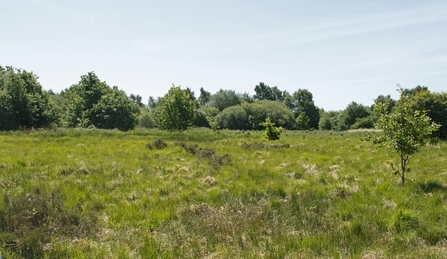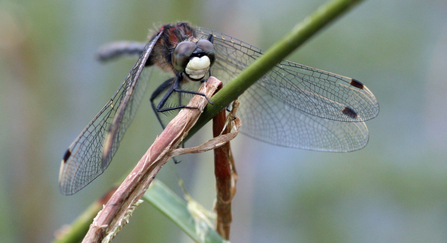Restoration works have commenced at Edge Green Common, sitting on the urban fringes of Golborne and Ashton in Makerfield. This five hectare site is made up of a mosaic of habitats including peatland, ponds, acidic grassland and plantation woodland, supporting a fantastic array of plants including sphagnum mosses, sundews, cotton grasses and bilberry.
Wigan wetland to become carbon capturing super habitat
Mark Hamblin

Edge Green Common is currently dried and degraded - credit Wigan Council
Mark Champion, Wigan Projects Officer at The Wildlife Trust for Lancashire, Manchester and North Merseyside, said; “Unfortunately, the site is currently being dried out, and these vital plant species are being shaded out, by some areas of scrub woodland and other trees that would not be naturally found on these peatland areas. So, the first stage in the restoration journey will be to fell these. This will allow the site to start naturally re-wetting, as the trees will no longer be removing large amounts of water from the peat via their root systems.”
This will allow the site to start naturally re-wetting, as the trees will no longer be removing large amounts of water from the peat via their root systems.
As soon as peat is dried or degraded, such as is happening at Edge Green Common currently, large amounts of the carbon that had been locked up within the peat oxidises and is released into the atmosphere as carbon dioxide, contributing to climate change. Whilst it is true that the trees will be absorbing some carbon, this is actually far outweighed by the amounts being released by the damaged peat.
The Wildlife Trust for Lancashire, Manchester and North Merseyside are working on the restoration plan for Edge Green Common with Wigan Council and Natural England, and once the first stage tree felling has been completed, we will be engaging local volunteers to get hands-on, planting carbon capturing sphagnum mosses and other peatland plant species.
And we’ve not forgotten the trees.
Councillor Paul Prescott, Portfolio Holder for Planning and Environmental Services at Wigan Council, commented; "Wigan Council have already planted over 5,800 trees at nearby Golborne Park. That is more than five times the number of trees that will be removed from Edge Green Common. The trees will be more suitable on the park and will sequester carbon, meanwhile the re-vegetated and re-wetted peat at Edge Green Common will be capturing and storing more carbon dioxide than the trees previously were."

Male white-faced darter dragonfly - Vicky Nall
Once Edge Green Common is restored to its former glory, the site will become a vital stepping stone helping to connect fragments of peatland and other wetlands throughout Greater Manchester. This will not only support habitat for wetland species such as the white-faced darter dragonfly, but the project will also help to alleviate flooding from Golborne Road and Edge Green Lane where the water currently runs off the site and into the road and associated drains.
